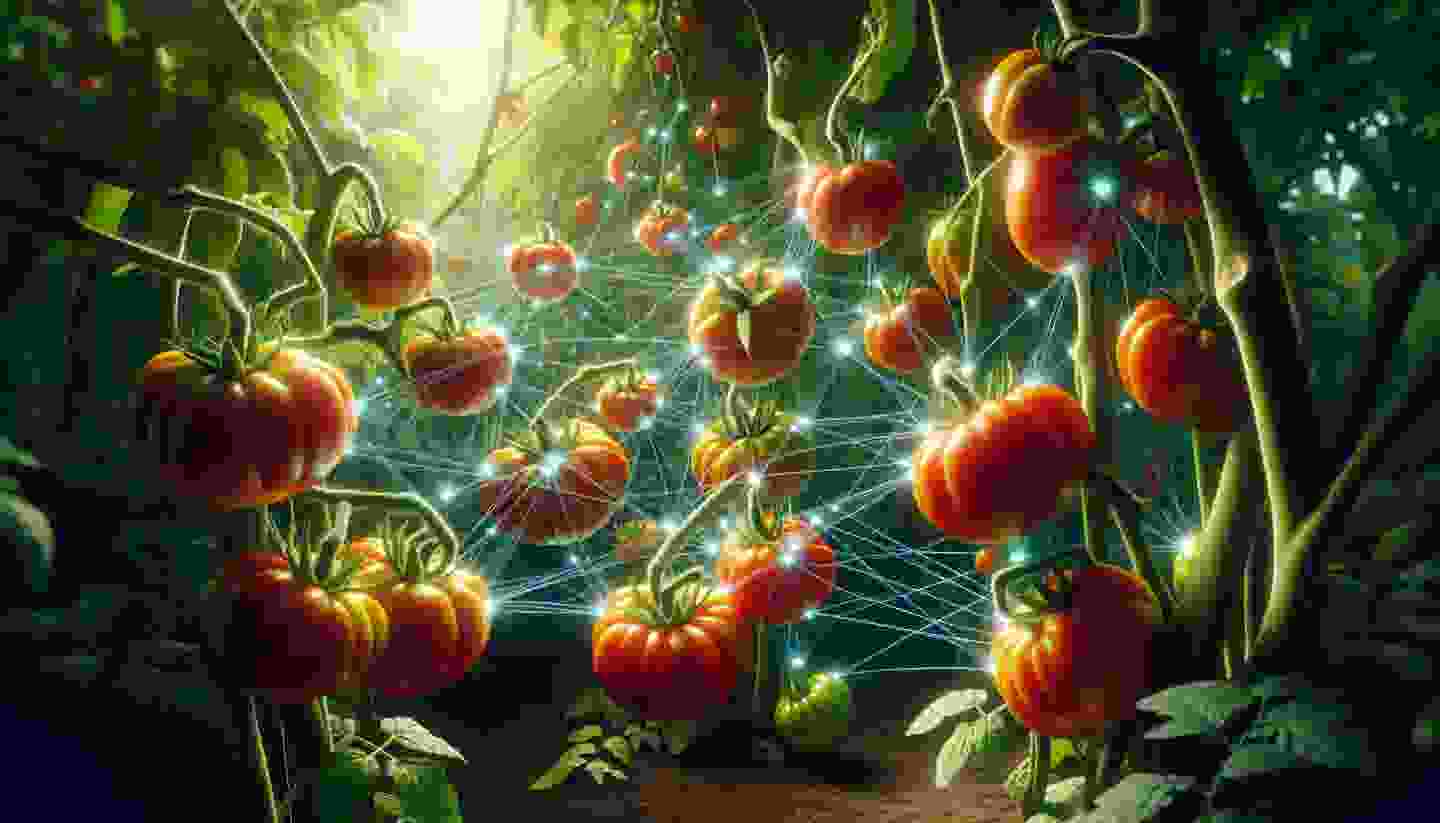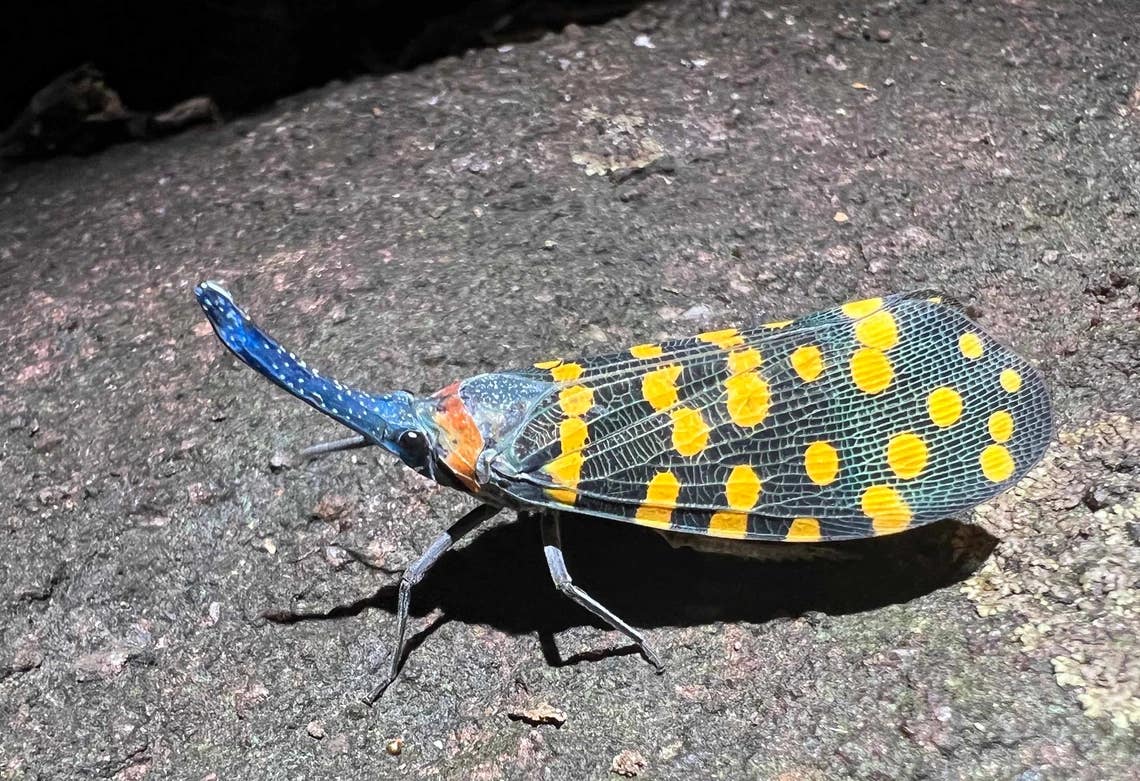Scientists unlock the secrets of how tomatoes talk to each other
Plants, rooted to their spots and unable to flee from danger, have evolved a remarkable way to convey their needs and respond to threats.

Plants, rooted to their spots and unable to flee from danger, have evolved a remarkable way to convey their needs and respond to threats. (CREDIT: AI-generated Microsoft Bing Image Creator)
The sweet scent of freshly cut grass, a quintessential fragrance of summer, lingers in the air, evoking warm memories of leisurely days under the sun. Yet, beyond its aromatic charm, this smell holds a fascinating secret—a signal of nature's intricate communication system.
Plants, rooted to their spots and unable to flee from danger, have evolved a remarkable way to convey their needs and respond to threats: chemical signals in the form of volatile organic compounds (VOCs).
These chemical whispers not only help plants prepare their own defenses but also serve as an alert system to warn neighboring vegetation, attract beneficial soil microbes, and even summon insect predators when a pest munches on their leaves.
Erinn Dady, a graduate student working alongside Professor Esther Ngumbi in the field of entomology, provides insight into this captivating world of plant communication. She explains, "When a caterpillar chews on a leaf, the plant sends out a signal that calls out to the caterpillar's predators. It's like a billboard that tells them where lunch is."
Related Stories:
To gain a deeper understanding of plant health and the factors influencing VOC emissions, recent research has delved into the collective impact of various elements on plant chemistry. Prior studies have examined individual factors such as soil microbes like arbuscular mycorrhizal fungi (AMF), caterpillar activity, and the specific tomato plant variety.
However, the latest study takes a comprehensive approach by investigating how these factors interplay with one another. Four distinct tomato varieties, including two heirlooms and two hybrids, were selected for the study based on their popularity among Illinois farmers. The chosen varieties were Mountain Fresh and Valley Girl for hybrids, and Amish Paste and Cherokee Purple for organic heirlooms.
Dady sheds light on the rationale behind their selection, stating, "Previous studies looked at tomato varieties that are grown conventionally at a massive scale for processing, and are not usually grown by small farmers, so we decided to ask Illinois farmers what they grow. Based on their feedback, we chose tomato varieties that are commonly grown in central Illinois."
Amish Paste tomatoes were among those studied by the researchers. Others included Mountain Fresh, Valley Girl, and Cherokee Purple. All are grown in Central Illinois. (CREDIT: Creative Commons)
The researchers explored the impact of AMF and caterpillars on these tomato varieties. They assessed VOC emissions by enclosing eight-week-old tomato plants in odor-blocking oven bags for an hour, capturing the chemicals produced by each plant through gas chromatography-mass spectrophotometry.
What the study revealed was intriguing—both AMF and caterpillars individually decreased the volatile emissions in all four tomato varieties, but their combined effect was surprisingly minimal compared to their individual influences.
Esther Ngumbi, left, and Erinn Dady studied the effect of arbuscular mycorrhizal fungi, caterpillars, and the variety of tomato plants on plant chemistry. (CREDIT: Fred Zwicky)
The reason behind the decrease in VOCs due to AMF remains a mystery, raising concerns about the plants' responsiveness to caterpillars. Notably, hybrid tomatoes emitted fewer volatiles compared to their heirloom counterparts, prompting Ngumbi to comment, "Heirloom tomatoes—the big, juicy tomatoes we all love—are bred for flavor. Meanwhile, hybrids are grown for large-scale conventional production, which comes at a cost to the plant. Our work suggests that we are compromising plant defenses through our breeding processes."
However, it wasn't just VOCs that the researchers observed. They also evaluated the plant's growth above and below the ground. Astonishingly, plants associated with AMF exhibited higher leaf biomass and more intricate root structures.
Dady explains the remarkable symbiosis, saying, "AMF form partnerships in over 80% of the land plants, setting up a trade where the fungi extract nutrients from the soil in exchange for carbon from plants. We found that, especially in Cherokee Purple, AMF may confer additional benefits, including enhanced growth and greater emission of VOCs."
Intriguingly, the plants treated with caterpillars displayed greater overall growth. Dady comments on this paradox, stating, "These plants had more biomass in both their roots and above the ground, which seems counterintuitive because they've actively been eaten. I would assume they would have less biomass. It is possible that the caterpillars triggered a growth response, similar to how you prune a tree to make it produce new growth."
The researchers are eager to delve deeper into the growth response to caterpillars. Ngumbi speculates, "It's possible that the plants decided that the number of caterpillars we were using were not sufficient to be considered a threat and that's why they kept growing. It is also possible that the caterpillars weren't hungry enough to cause enough damage."
As Dady aptly summarizes, "There's a lot going on behind the scenes that we don't yet understand. For example, we are barely scratching the surface in understanding the role of different microbes. People tend to think that plants are not intelligent, but our studies have shown that they are actively responding to the environment around them using chemistry."
Ngumbi emphasizes the importance of their work, saying, "We are trying to spread the gospel of plant chemistry, it's the language plants use to communicate, and we are excited to learn more."
The study, titled "Plant Variety, Mycorrhization, and Herbivory Influence Induced Volatile Emissions and Plant Growth Characteristics in Tomato," has been published in the Journal of Chemical Ecology, with funding provided by the University of Illinois Urbana-Champaign. This research takes us one step closer to unlocking the secrets of the silent conversations that shape the world of plants.
Note: Materials provided by Brighter Side of News. Content may be edited for style and length.
Like these kind of feel good stories? Get the Brighter Side of News' newsletter.



